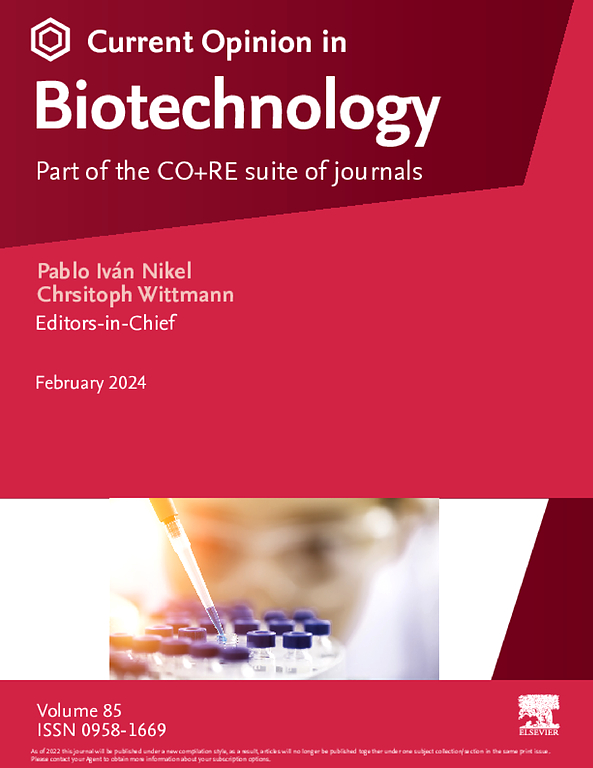通过代谢工程改造的大肠杆菌生产化学物质。
IF 7
2区 工程技术
Q1 BIOCHEMICAL RESEARCH METHODS
引用次数: 0
摘要
大肠杆菌越来越多地用于化学生产,其工业竞争力现在取决于通过一流途径扩大其分子库,并达到一流的滴度、速率和产量(TRY)。最近的里程碑包括首次演示使用工程大肠杆菌从葡萄糖生产芳香均聚酯和聚(酯酰胺)s。为了优化TRY,系统代谢工程利用多种工具,如基因组级CRISPRi/sRNA文库、动态生物传感器和氧化还原平衡模块,以优化细胞资源流向产品形成。同时,硅工具支持逆转录生物合成途径设计、通量优化和酶工程。通过将一流的途径构建与一流的TRY优化相结合,大肠杆菌有望推动下一代可持续的大规模生物制造。总体而言,本综述概述了具有代表性的成就、战略方法和新兴前景,强调了最近的进展如何将大肠杆菌定位为可持续生产增值化学品和材料的通用和有竞争力的底盘。本文章由计算机程序翻译,如有差异,请以英文原文为准。
Production of chemicals by metabolically engineered Escherichia coli
Escherichia coli is increasingly employed for chemical production, with its industrial competitiveness now depending on both the expansion of its molecular repertoire through first-in-class pathways and achieving best-in-class titer, rate, and yield (TRY). Recent milestones include the first demonstration of producing aromatic homopolyester and poly(ester amide)s from glucose using engineered E. coli. To optimally maximize TRY, systems metabolic engineering leverages diverse tools such as genome-scale CRISPRi/sRNA libraries, dynamic biosensors, and redox-balancing modules to optimally channel cellular resources toward product formation. In parallel, in silico tools support retrobiosynthetic pathway design, flux optimization, and enzyme engineering. By integrating first-in-class pathway construction with best-in-class TRY optimization, E. coli is poised to drive the next generation of sustainable, large-scale biomanufacturing. Overall, this review outlines representative achievements, strategic approaches, and emerging prospects, highlighting how recent advancements are positioning E. coli as a versatile and competitive chassis for sustainable production of value-added chemicals and materials.
求助全文
通过发布文献求助,成功后即可免费获取论文全文。
去求助
来源期刊

Current opinion in biotechnology
工程技术-生化研究方法
CiteScore
16.20
自引率
2.60%
发文量
226
审稿时长
4-8 weeks
期刊介绍:
Current Opinion in Biotechnology (COBIOT) is renowned for publishing authoritative, comprehensive, and systematic reviews. By offering clear and readable syntheses of current advances in biotechnology, COBIOT assists specialists in staying updated on the latest developments in the field. Expert authors annotate the most noteworthy papers from the vast array of information available today, providing readers with valuable insights and saving them time.
As part of the Current Opinion and Research (CO+RE) suite of journals, COBIOT is accompanied by the open-access primary research journal, Current Research in Biotechnology (CRBIOT). Leveraging the editorial excellence, high impact, and global reach of the Current Opinion legacy, CO+RE journals ensure they are widely read resources integral to scientists' workflows.
COBIOT is organized into themed sections, each reviewed once a year. These themes cover various areas of biotechnology, including analytical biotechnology, plant biotechnology, food biotechnology, energy biotechnology, environmental biotechnology, systems biology, nanobiotechnology, tissue, cell, and pathway engineering, chemical biotechnology, and pharmaceutical biotechnology.
 求助内容:
求助内容: 应助结果提醒方式:
应助结果提醒方式:


